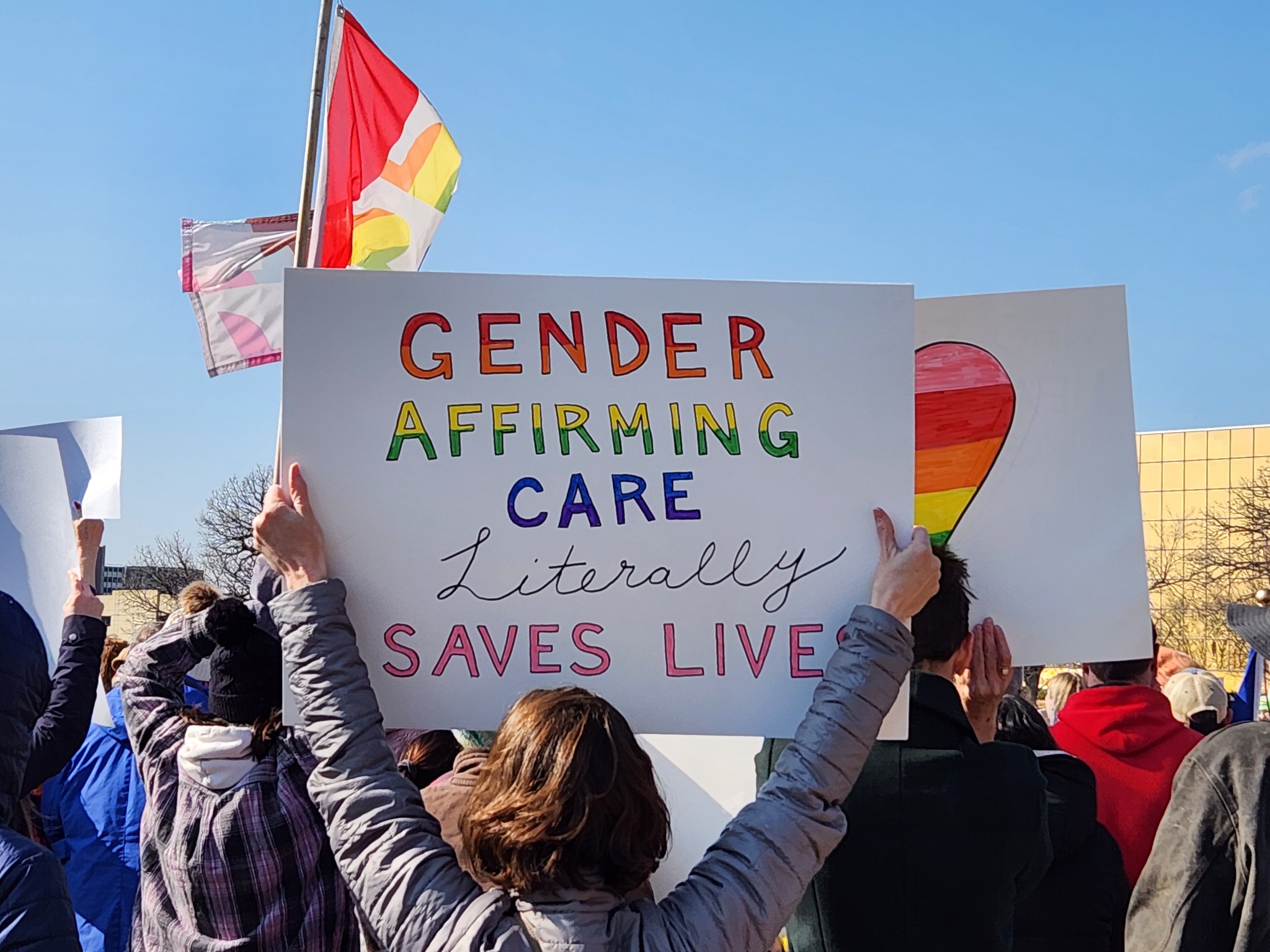Comprehensive Guide To Gender Affirming Care: Empowering Transgender Individuals a critical resource designed for transgender individuals, healthcare providers, and allies seeking guidance and support on gender affirming care.

Almost no one who has top surgery regrets it, study finds - Source www.thepinknews.com
Editor's Note: Comprehensive Guide To Gender Affirming Care: Empowering Transgender Individuals has been published to provide you with the most up-to-date data and information. The guide will give insight and understanding in Gender Affirming Care to empower transgender individuals and their providers.
Through extensive analysis and data collection our team of experts have put together this guide to help you make the right decision.
Key Differences or Key Takeaways
FAQs
This FAQ section provides concise answers to frequently asked questions, dispelling common misconceptions and concerns surrounding Comprehensive Guide To Gender Affirming Care: Empowering Transgender Individuals for a better understanding.

Attacks on Gender-Affirming Care by State: Map - Community Commons - Source www.communitycommons.org
Question 1: What does gender-affirming care actually entail?
Gender-affirming care comprises an array of medical and non-medical interventions tailored to support transgender individuals in their gender transition journey. It encompasses hormone therapy, surgical procedures, mental health services, and legal and social assistance to help them live authentically and comfortably.
Question 2: Why is gender-affirming care crucial for transgender well-being?
Gender-affirming care is fundamental for transgender individuals' mental, physical, and overall well-being. By providing a supportive environment that validates their gender identity, it reduces the risk of negative mental health outcomes such as anxiety, depression, and suicidality. It also enables them to live more fulfilling and authentic lives.
Question 3: What are the potential risks associated with gender-affirming care?
While gender-affirming care is generally safe and effective, it is essential to acknowledge potential risks, such as those related to surgery or hormone therapy. However, these risks are typically outweighed by the significant benefits the care provides to transgender individuals.
Question 4: Is informed consent a component of gender-affirming care?
Informed consent is a crucial part of ethical gender-affirming care. Before undergoing any medical interventions, transgender individuals must receive comprehensive information about the potential risks and benefits, ensuring they make autonomous decisions about their care.
Question 5: How can individuals access gender-affirming care?
Accessing gender-affirming care can vary depending on the location and available resources. It is recommended to establish connections with local LGBTQ+ organizations or healthcare providers specializing in transgender health who can guide individuals on the appropriate steps.
Question 6: Is it possible for gender-affirming care to be covered by insurance?
The coverage of gender-affirming care by insurance varies widely. In some regions, certain services may be covered, while others remain excluded. It is essential to check with insurance providers to ascertain the extent of coverage available.
By addressing these common questions and concerns, we aim to promote a better understanding of gender-affirming care and its significance for transgender individuals. It is an essential component of creating a more inclusive and supportive society where everyone can live authentically and with dignity.
For further exploration of this topic, refer to the comprehensive Comprehensive Guide To Gender Affirming Care: Empowering Transgender Individuals.
Tips
In this guide, you'll discover practical tips and evidence-based practices to support your gender affirmation journey.
Tip 1: Prioritize Mental Health and Wellbeing
Acknowledge and address mental health challenges that may accompany gender dysphoria. Seek professional counseling from a therapist trained in transgender care to process emotions, develop coping mechanisms, and navigate gender identity.
Tip 2: Explore Gender Identity and Expression
Engage in self-exploration to understand your gender identity. Experiment with gender-affirming behaviors, such as dressing in clothes that align with your gender, using a name or pronouns that reflect your identity, and connecting with others in the transgender community.
Tip 3: Seek Support from Trusted Individuals
Surround yourself with people who offer acceptance and support. This includes family, friends, partners, and healthcare professionals. Their understanding can provide a sense of belonging and reduce isolation.
Tip 4: Access Affirming Healthcare Services
Seek care from healthcare professionals who are knowledgeable and experienced in transgender care. Explore medical interventions, such as hormone therapy and gender-affirming surgeries, if desired. These treatments can alleviate gender dysphoria and improve overall well-being.
Tip 5: Navigate Legal and Social Transitions
Understand legal implications and practical considerations related to gender transition. Consider updating identification documents, changing names and pronouns in official records, and seeking support from organizations that provide legal assistance.
Tip 6: Engage in Self-Care and Body Acceptance
Practice self-care routines that promote well-being and body autonomy. Engage in activities that bring you joy, such as exercise, meditation, or connecting with nature. Learn to appreciate and accept your body, regardless of whether you pursue medical interventions.
Tip 7: Stay Informed and Connected
Access reputable resources and connect with transgender organizations to stay updated on the latest advancements in healthcare and social policies. Seek peer support groups and online communities to share experiences and find a sense of solidarity.
Remember, gender affirmation is an ongoing journey. It involves a combination of personal exploration, medical interventions, and social support. By following these tips, you can empower yourself and navigate this transformative process with dignity and resilience.
Comprehensive Guide To Gender Affirming Care: Empowering Transgender Individuals
Comprehensive guides to gender affirming care are essential in informing and empowering individuals seeking to affirm and live in their authentic gender identities. These guides provide valuable insights into the various dimensions and aspects of gender affirming care and their implications for transgender individuals. Here are six key aspects that form the framework of such a guide:
- Understanding Gender Identity: Explores the multifaceted nature of gender identity and the diverse ways in which individuals experience and express gender.
- Medical Interventions: Discusses hormone therapy, surgeries, and other medical options available for transgender individuals transitioning to their desired gender.
- Mental Health Support: Emphasizes the importance of mental health care in addressing gender dysphoria and supporting individuals throughout their transitions.
- Social and Legal Transitions: Guides individuals through social and legal transitions, including name and gender marker changes, and provides resources for accessing support systems and legal protections.
- Community and Family Support: Highlights the role of supportive communities and healthy family relationships in fostering well-being and resilience for transgender individuals.
- Self-Care and Empowerment: Empowers individuals with strategies for self-care, self-acceptance, and self-advocacy, recognizing the unique challenges and strengths of transgender experiences.

Bills roundup: Gender-affirming care, Indigenous People's Day - Source dailymontanan.com
These aspects work together to provide a comprehensive understanding of gender affirming care and its implications for transgender individuals. They address not only the medical and legal processes involved in transitioning but also the broader social and emotional dimensions. By offering support, information, and resources, these guides empower transgender individuals to make informed decisions, navigate the complexities of gender transitioning, and live authentically and with dignity.
Comprehensive Guide To Gender Affirming Care: Empowering Transgender Individuals
To provide comprehensive gender affirming care, it is crucial to delve into the intricacies of the topic. This guide equips healthcare providers with the knowledge and skills to deliver individualized, holistic, and compassionate care to transgender individuals. Through understanding the unique needs and experiences of these individuals, providers can create inclusive and safe spaces that foster well-being and empower transgender individuals to live authentically.

Iowa ban on gender-affirming care would face uphill battle in court - Source www.bleedingheartland.com
By embracing a trauma-informed approach, healthcare professionals can create a safe and supportive environment for transgender individuals who may have experienced stigma, discrimination, or trauma. This approach involves recognizing and responding to the impact of these experiences on individuals' physical, emotional, and mental health. By fostering a collaborative and respectful relationship with transgender individuals, healthcare providers can empower them to make informed decisions about their care and advocate for their own health and well-being.
Education is a vital component of gender affirming care, as it empowers individuals with the knowledge they need to make informed choices about their bodies and lives. The guide provides comprehensive information on gender dysphoria, hormone therapy, and surgical interventions, enabling transgender individuals to understand the options available to them and make decisions that align with their unique needs and goals.
Conclusion
Equipping healthcare professionals with the knowledge and skills to provide gender affirming care is essential for the well-being of transgender individuals. This guide serves as a roadmap for delivering individualized, holistic, and compassionate care, empowering transgender individuals to live authentically and thrive.
As the field of gender affirming care continues to evolve, it is imperative for healthcare providers to stay abreast of the latest advancements and best practices. By embracing a collaborative approach and fostering a safe and inclusive environment, we can work towards creating a world where transgender individuals have access to the care they need and deserve.
